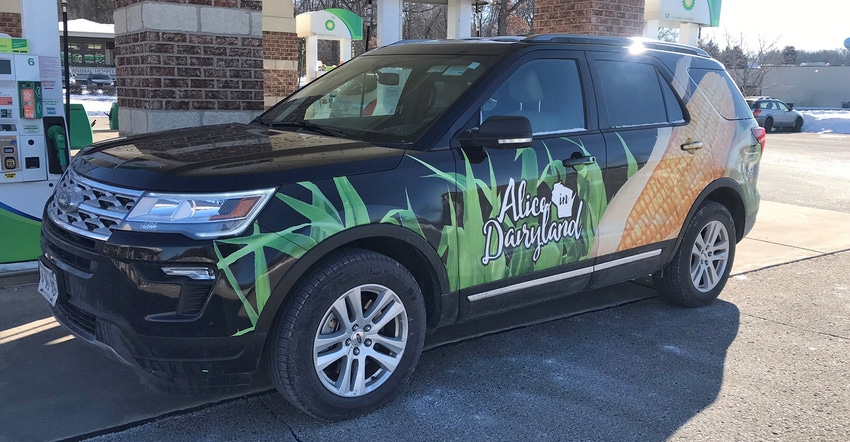February 10, 2020

My trusty sidekick Kernel and I have traveled over 20,000 miles this year, crisscrossing the state to promote Wisconsin agriculture. With each mile we drive, we showcase our support for Wisconsin’s corn growers.
What is Kernel, you may ask? It is an E85-capable Ford Explorer, generously provided by the Wisconsin Corn Promotion Board for Alice in Dairyland to drive throughout her year. This partnership promotes the use of ethanol as a renewable, alternative transportation fuel that’s grown right here in Wisconsin.
Ethanol is a renewable biofuel that can be made from various plant materials, collectively known as “biomass.” In the U.S., 95% of ethanol is produced from the starch in corn grain. When ethanol is produced from corn, a positive energy balance is created, meaning that the process of producing the fuel requires less energy than the amount of energy contained in the fuel itself.
Over the last three decades, ethanol made from corn has become an important fuel in Wisconsin. Nine ethanol plants currently call Wisconsin home, collectively producing more than 500 million gallons a year. The plants, spread throughout the state, use 37% of our annual corn crop — that’s more than 180 million bushels (1 bushel is equivalent to 56 pounds of dry corn)!
According to the U.S. Department of Energy, there are two methods used to produce ethanol from starch-based crops. Wet-mill processing separates starch, protein and fiber in corn prior to processing these components into ethanol and coproducts such as corn sweeteners and corn oil. On the other hand, dry-milling grinds corn into flour and ferments it into ethanol. This process generates coproducts of dried distillers grains and carbon dioxide. Dry mills are most common, and are beneficial to Wisconsin’s dairy and livestock farmers. The dried distillers grains produced as a coproduct are dense in protein and are a valuable livestock feed.
Environmentally friendly
Ethanol is now found in all “regular” gasoline in Wisconsin because of its clean-air benefits. According to the University of Nebraska-Lincoln, using ethanol helps reduce carbon dioxide emissions by up to 29%. Additionally, UNL found that ethanol reduces greenhouse direct-effect greenhouse gas emissions by 59% compared to gasoline. Most stations today offer an E10 blend in fuel that has an 87-octane rating. The E10 refers to a 10% blend of ethanol in the gas. Because of growing consumer demand, some stations are even adding blender pumps so drivers can use ethanol-blended fuel with more than 10% ethanol.
Ethanol-blended fuels directly benefit vehicle owners. First, ethanol-blended fuel helps keep your fuel system clean for better performance. Ethanol adds oxygen to gasoline — improving combustion and reducing toxic exhaust emissions. Ethanol-blended fuel is also beneficial in cold Wisconsin winters, acting as a gas-line antifreeze.
As an industry, Wisconsin ethanol generates $4.2 billion in economic activity annually. Much of this economic benefit is seen in rural communities, as that is where most of the ethanol is produced. With a little help from Kernel and the Wisconsin Corn Promotion Board, I am proud to promote our state’s ethanol production, an industry that supports local corn growers and keeps money right here in our economy. Learn more about Wisconsin-grown corn and ethanol at wicorn.org.
Martin is the 72nd Alice in Dairyland.
You May Also Like




